In the midst of the continuous cool wet weather it has been hard to find a good day, but I made my first bid of the year up Perkins Peak June 25.
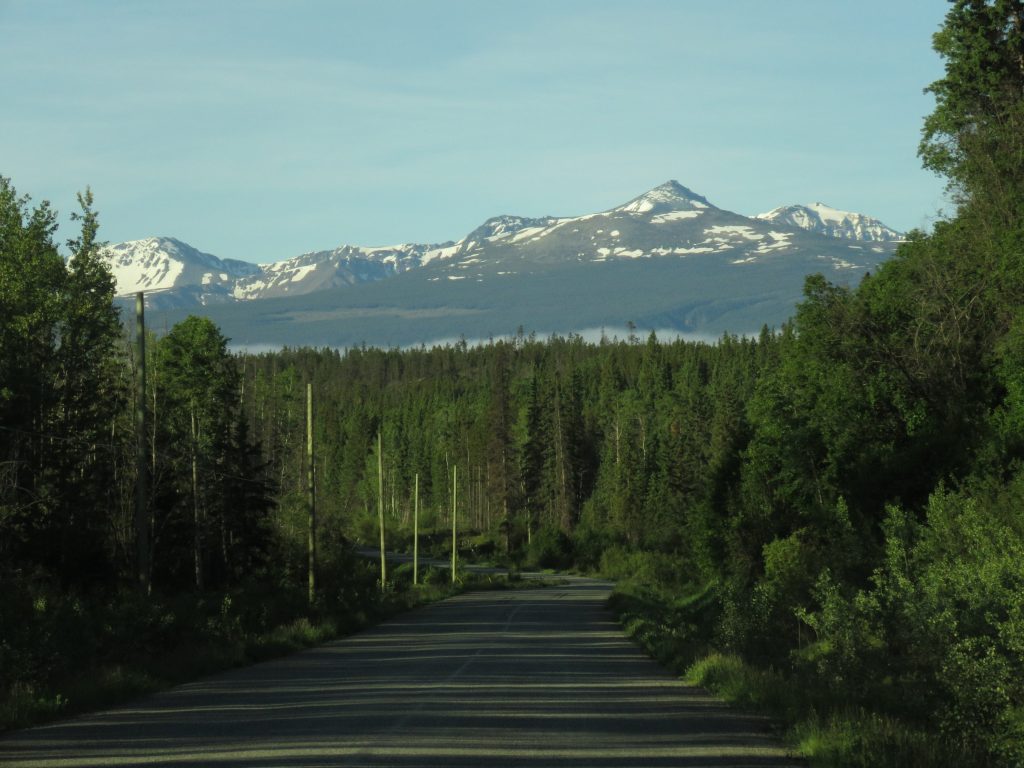
A lot of the snow has melted from the mountain. I always figure when more than half is gone, the river will start falling. Although there were bad floods further east, our cool weather meant that the river was never all that high.
I drove about half way up and ATV-ed the rest.
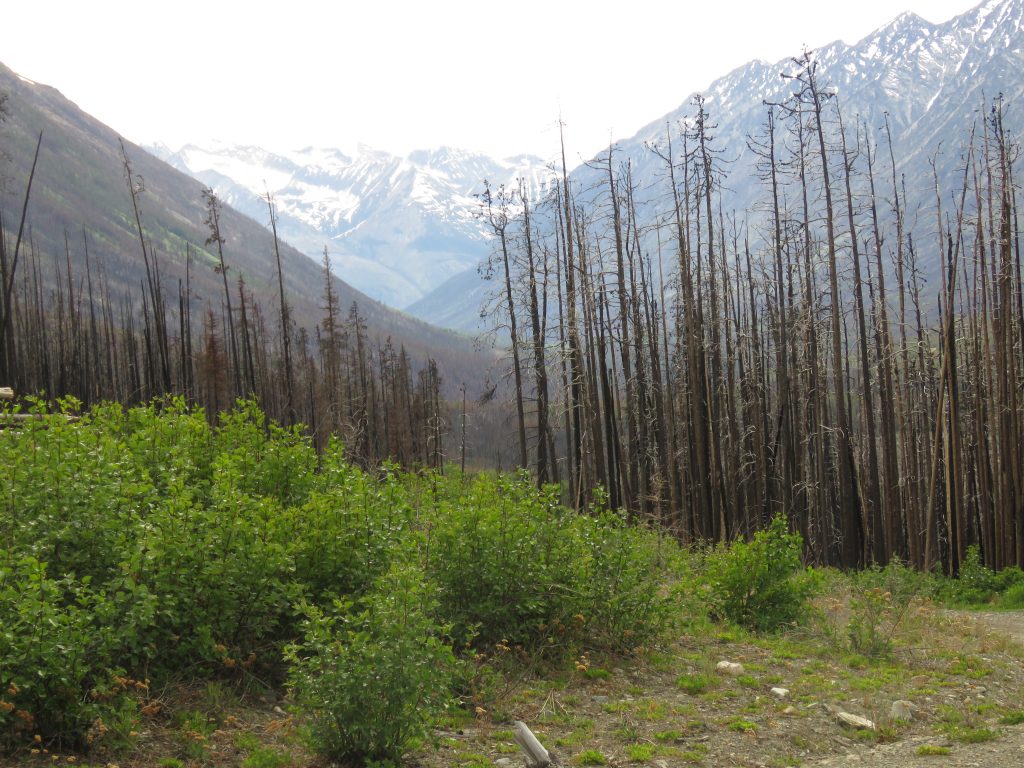
Then I came across a road closed notice. But people had obviously driven around so I continued. I heard later that when a friend went up a few days before, it was completely closed. She found another route (that I didn’t know about) but higher up she met a guy who happily told her he had cut it out on his way up!
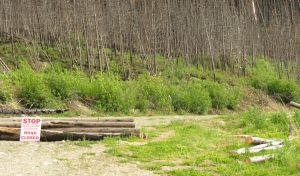
I guess forestry put up the barrier, but it fact the road above it was better than the road below it where there had been several bad washouts.
People often associate the alpine with flowers, but they are thinking of the later ones normally seen on calendar pictures. In this part of the world, however, there is always an earlier flush late June/early July. It was the same at Nuk Tessli although there it was a week or two later. The Jacob,s ladder was amazing.
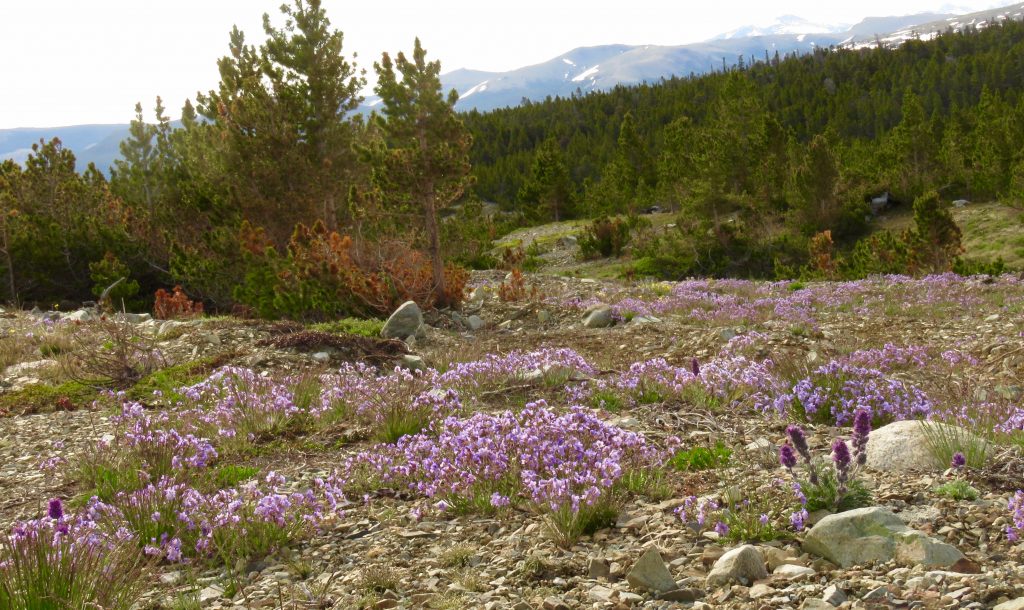
Here it is mixed with the fuzzy spires of silky phacelia and a common cinquefoil, probably Potentilla diversifolia.
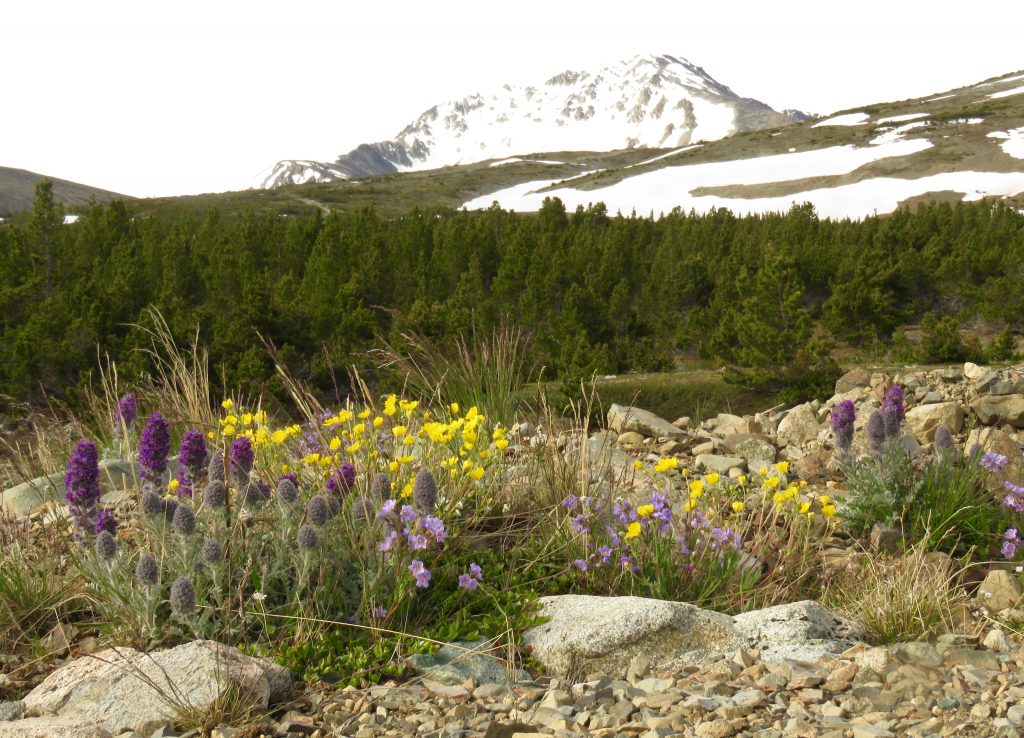
At the treeline there are 2 ways to drive. To the right is a small lake, which is where I’d hoped to go, but the route was blocked by a big snowdrift. So I turned left, bumped and lurched a bit higher, then stopped and walked.
Most people faced with mountains would primarily see this.these
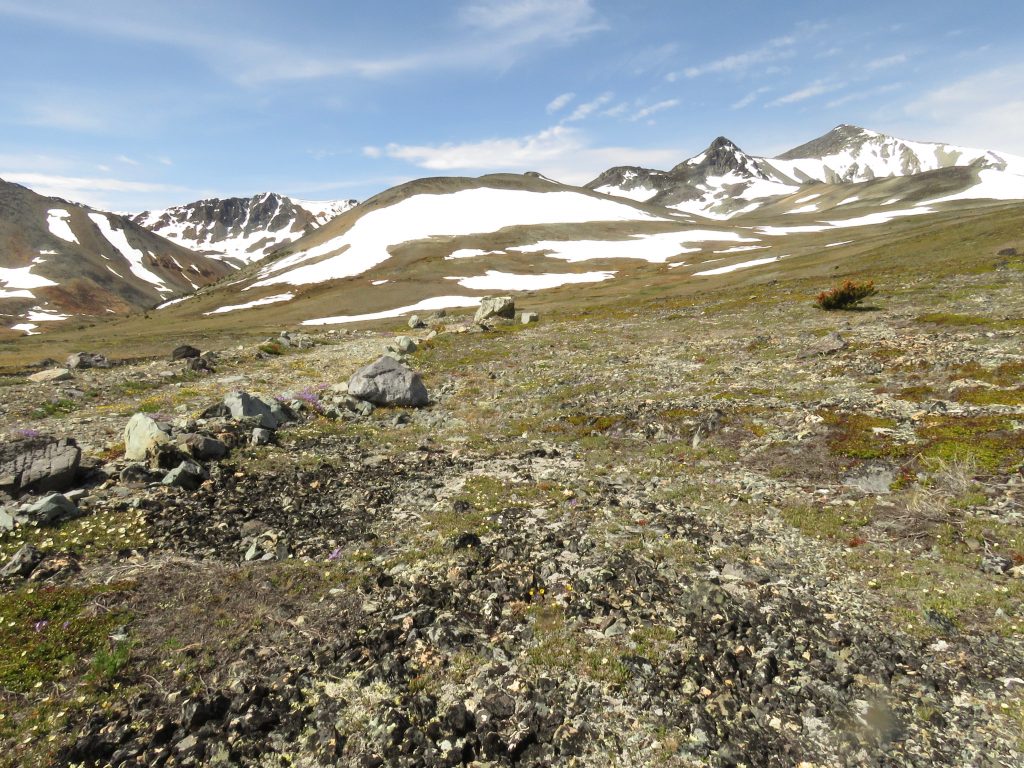
But if you look closely, the tundra is dotted with specks of colour. I can no longer do long hikes – fortunately I get tremendous pleasure from alpine plants – equally fortunately, there are ways to access them in this area.
Eight-petalled avens.
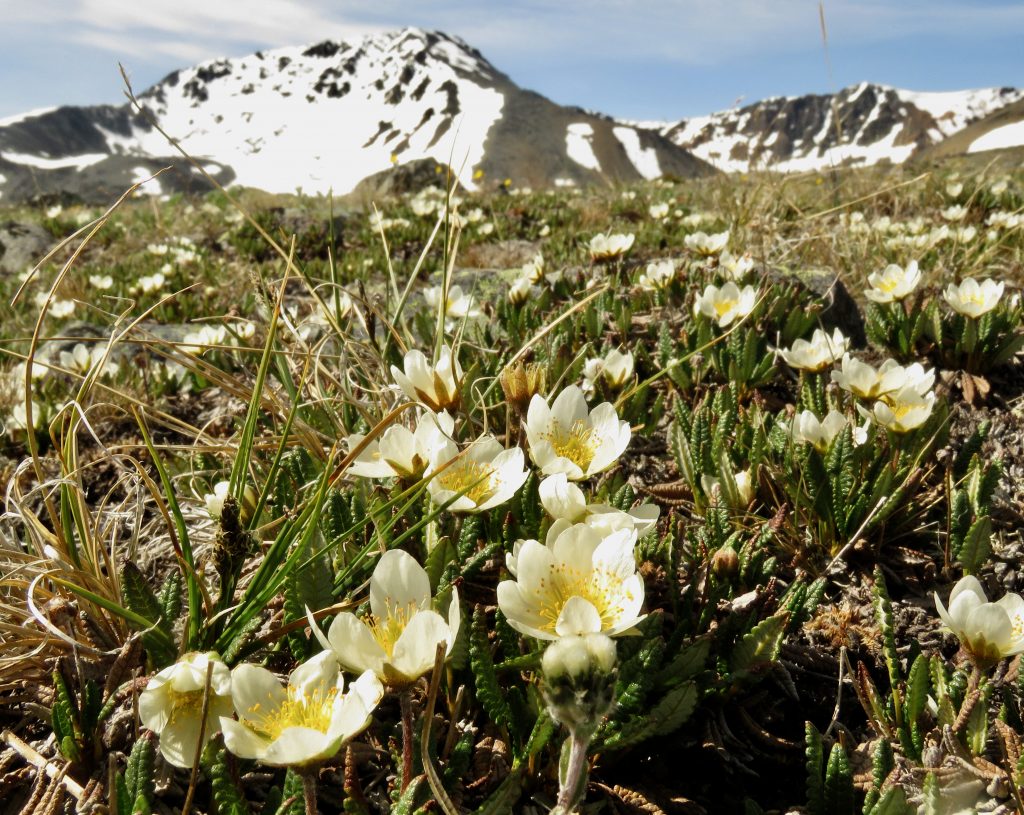
With Jacob’s ladder
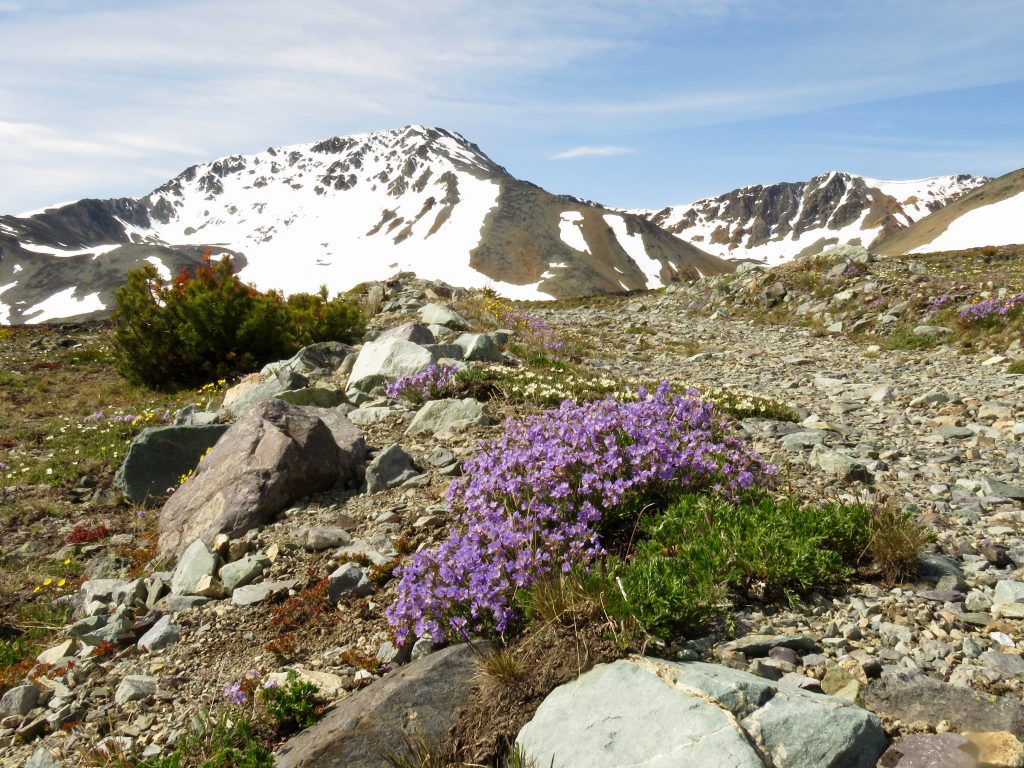
Yellow heather
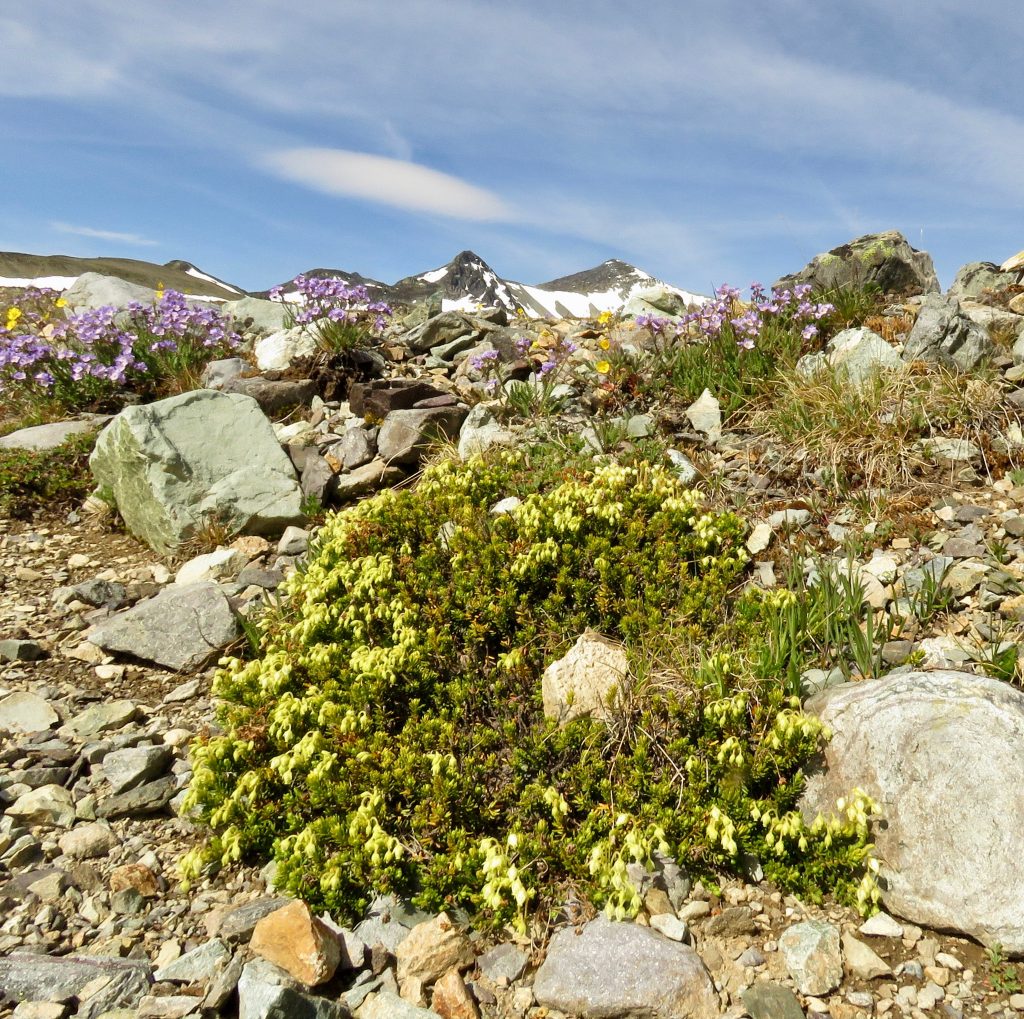
The tundra flowers tended to be more scattered, but soon there was a hint of an area that had recently held water. It was bordered by a knee-high willow species.
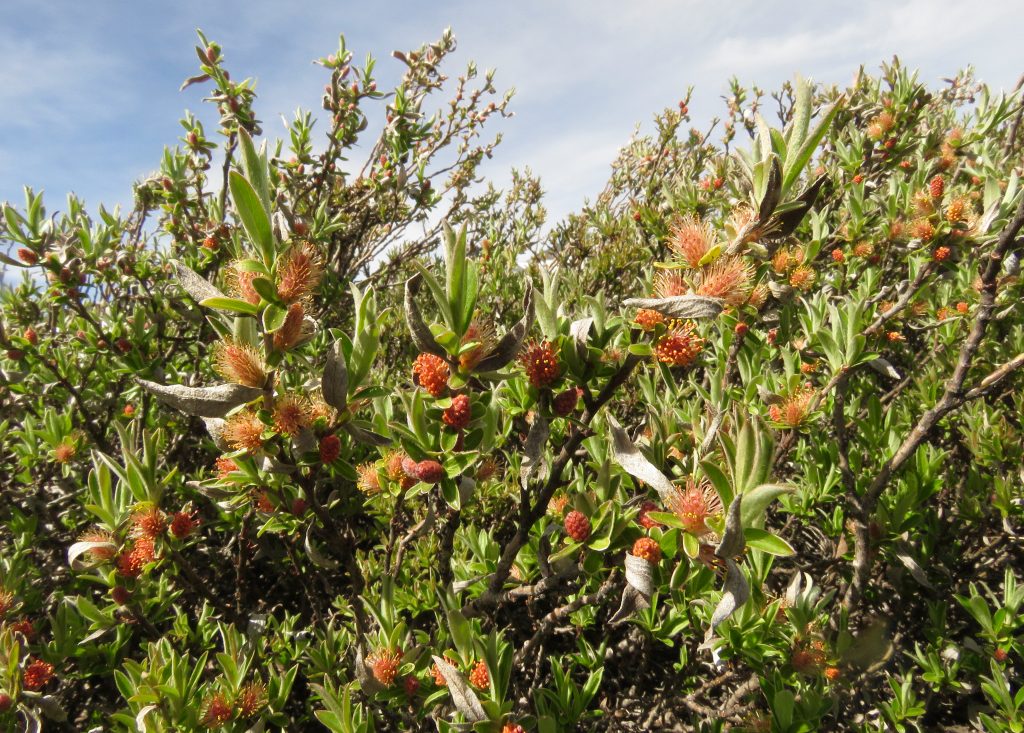
It is by no means the smallest willow species in the mountains. That title goes to the snow willow.
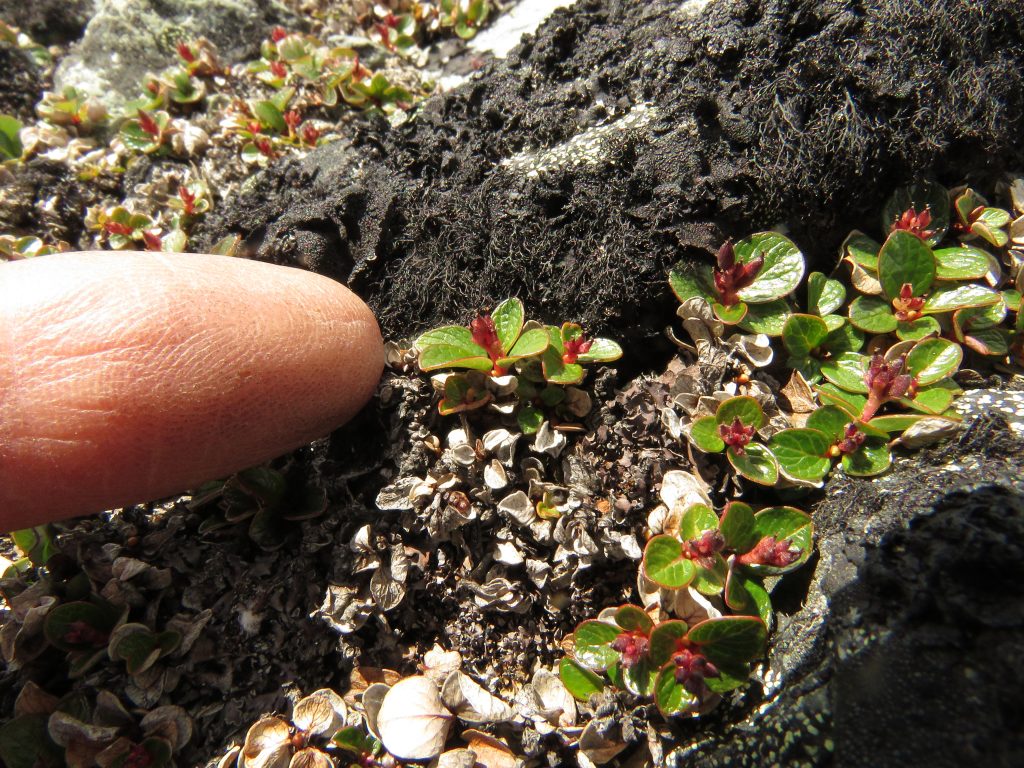
The damp channel was rimmed with mini gardens.
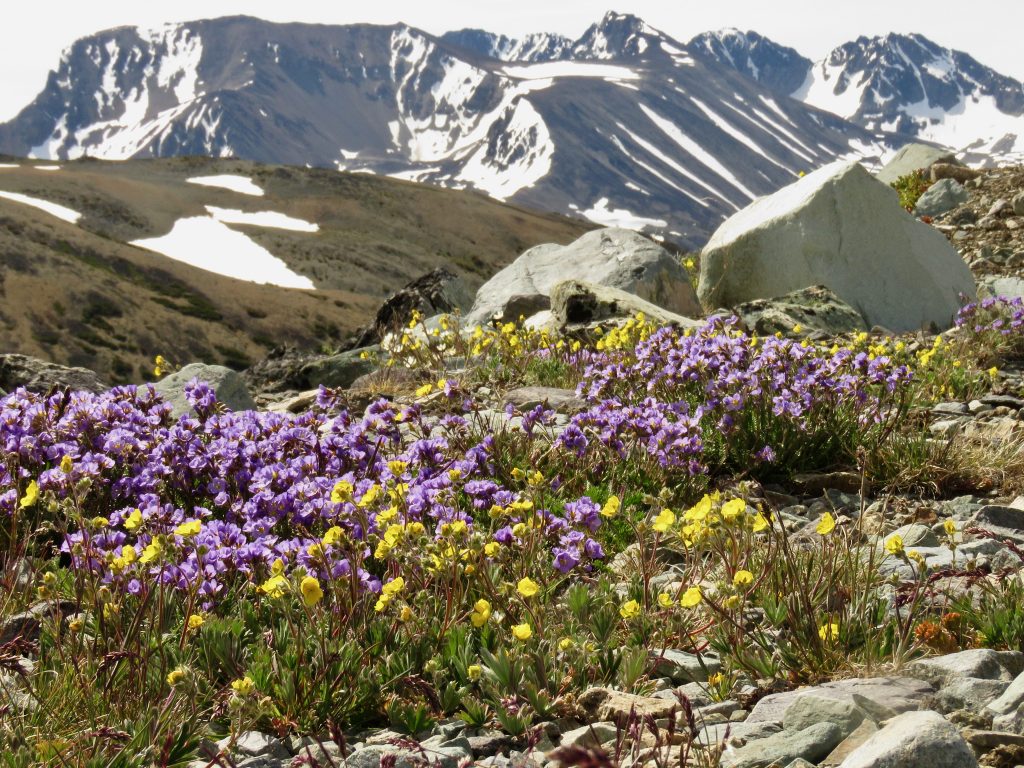
Roseroot.
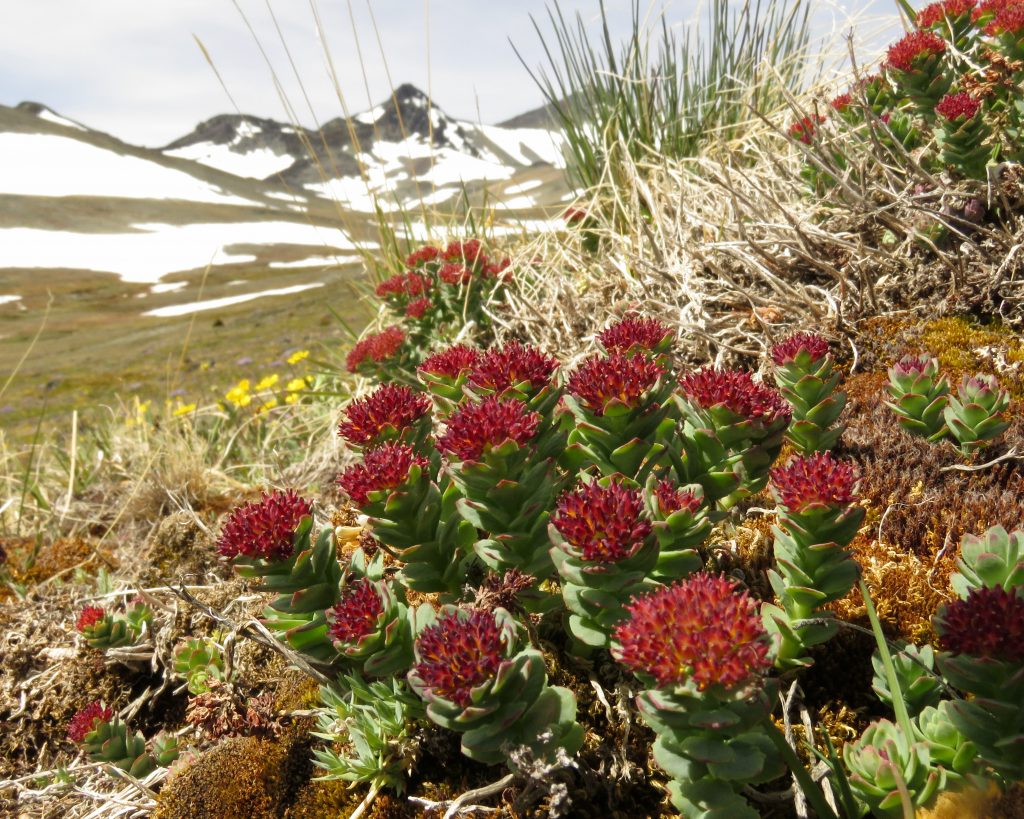
Alpine forgetmenot (with Jacob’s ladder)
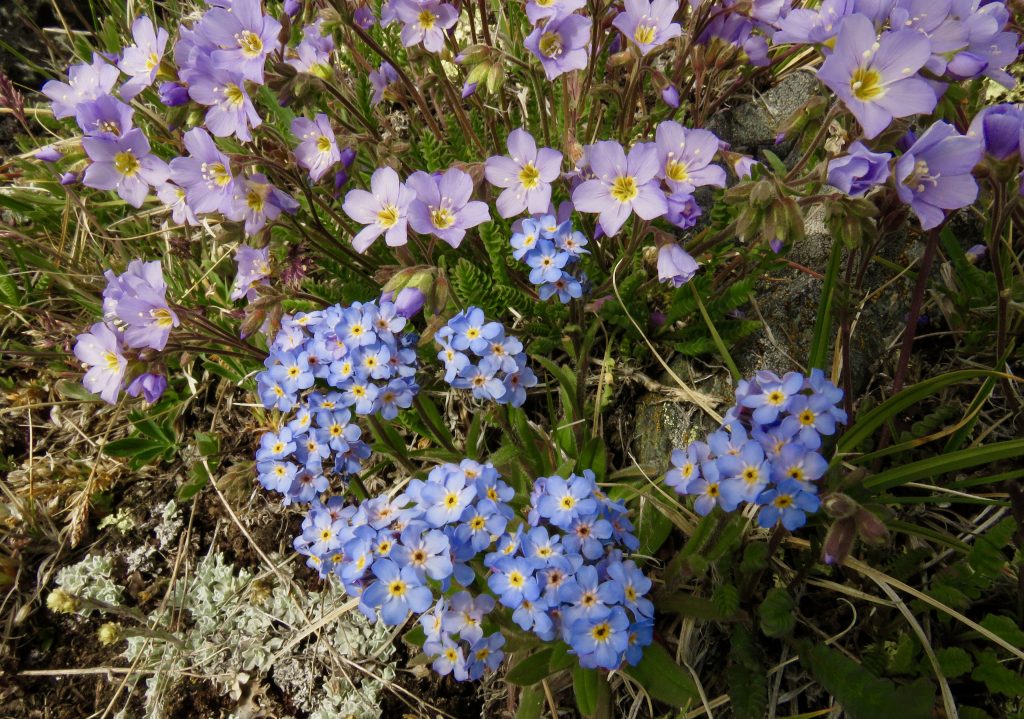
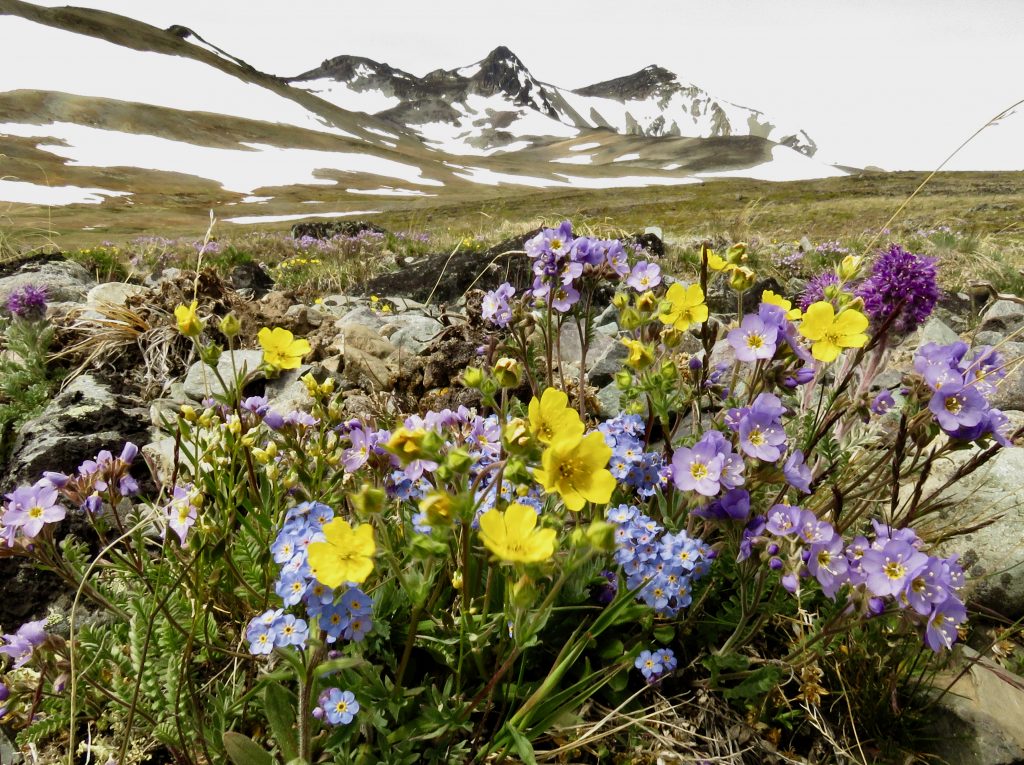
The only plant I found of Fairy Candelabra.
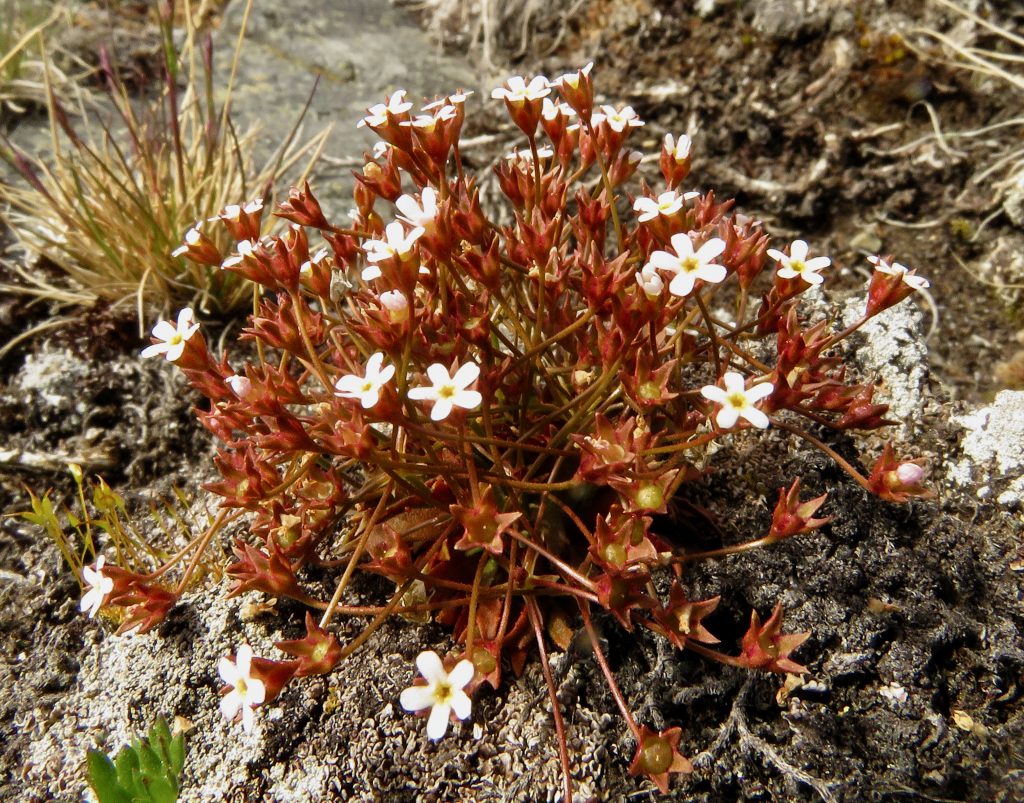
The drier areas hosted cut-leaf fleabane,
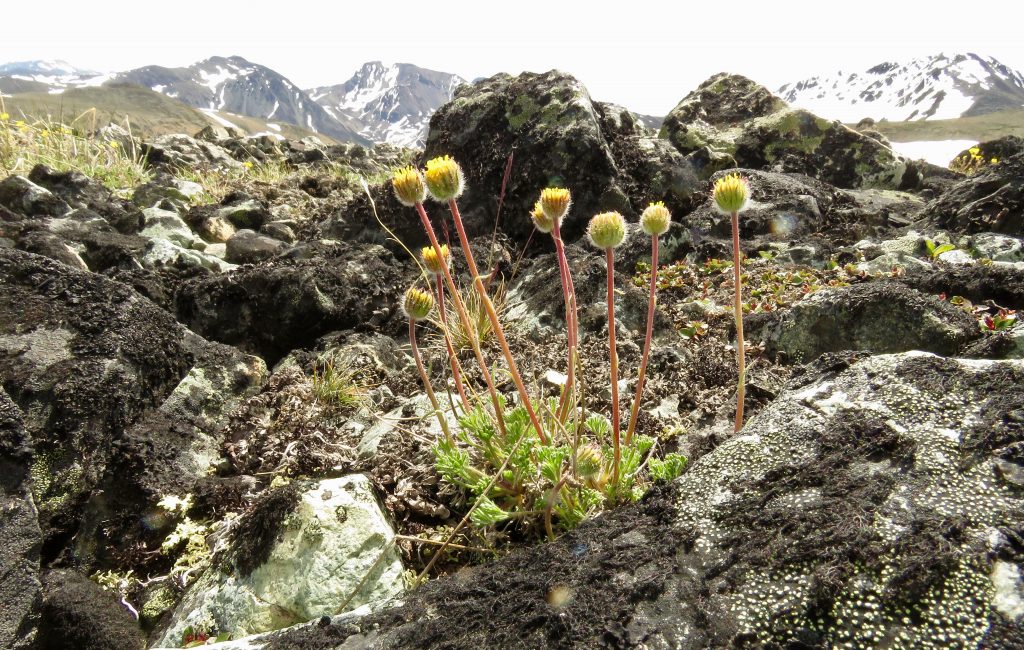
And Payson’s draba
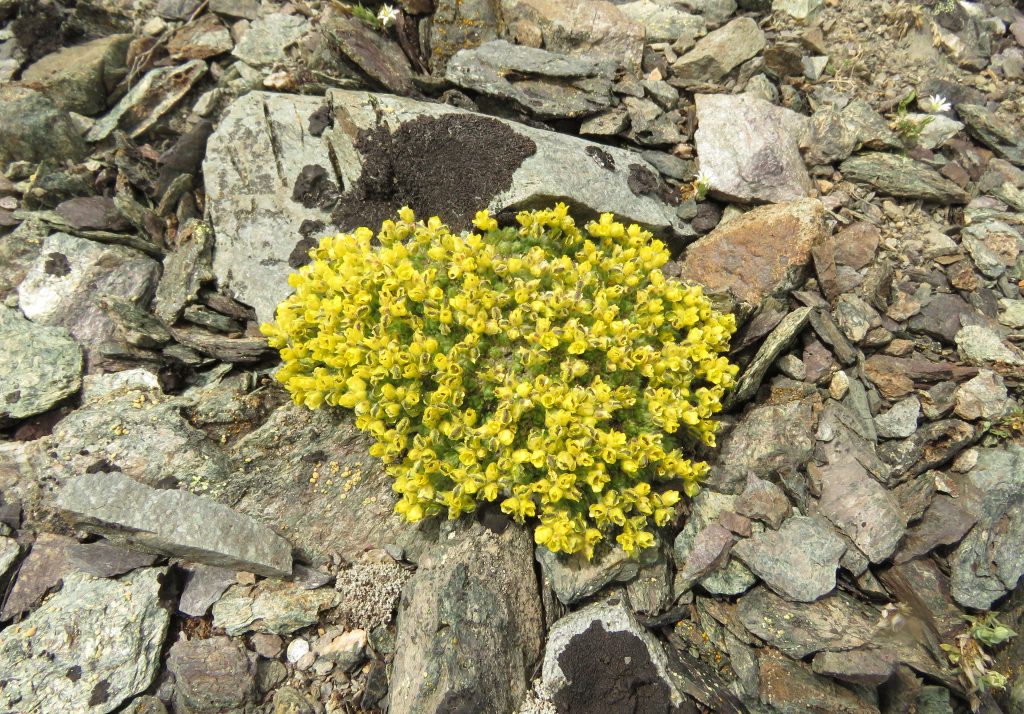
The dry areas also presented with multiple lichen-scapes.
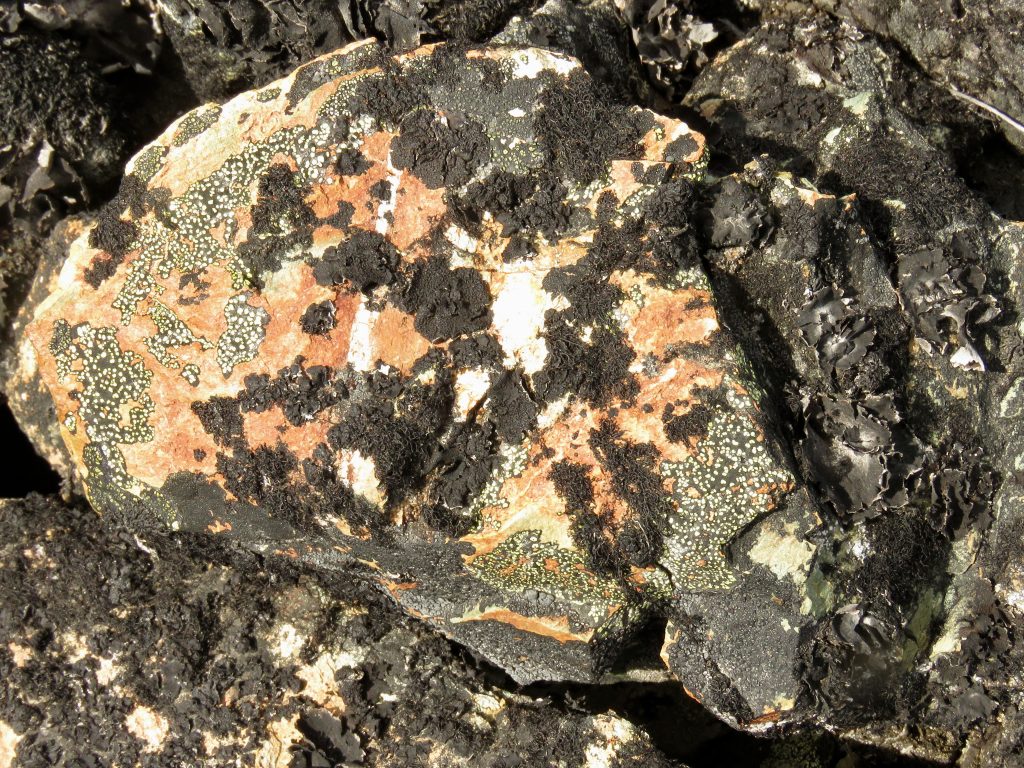
Hooked on wet areas, I headed for a depression fed by melting snow, and was not disappointed.
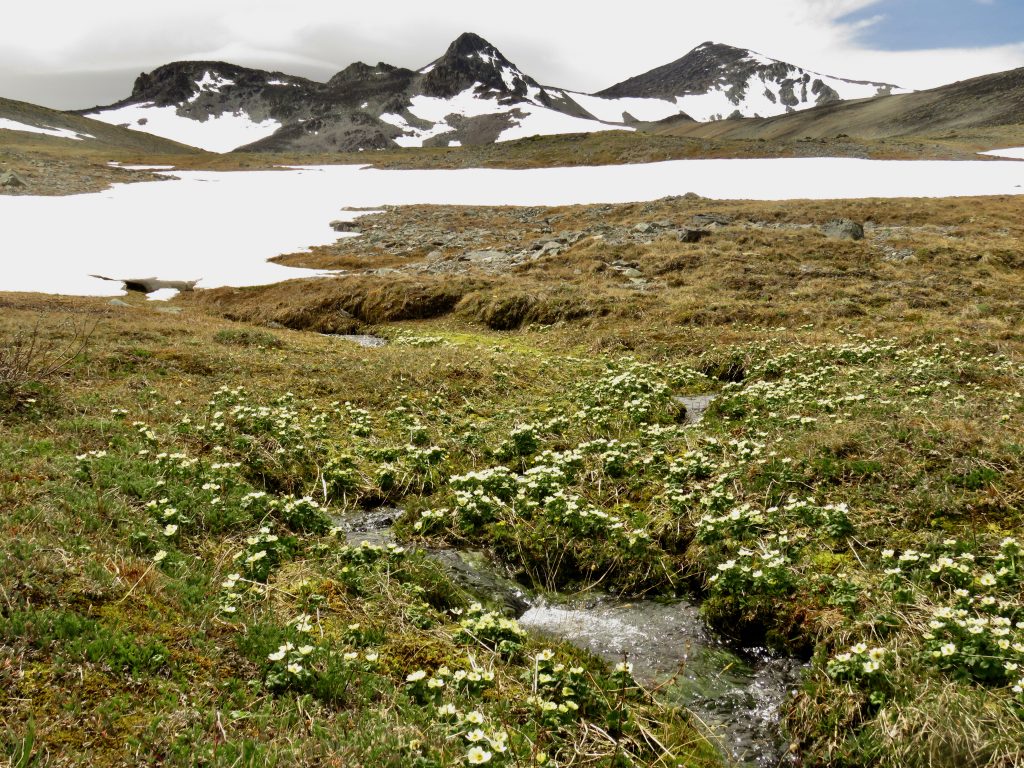
The rushing water stimulated globe flowers.
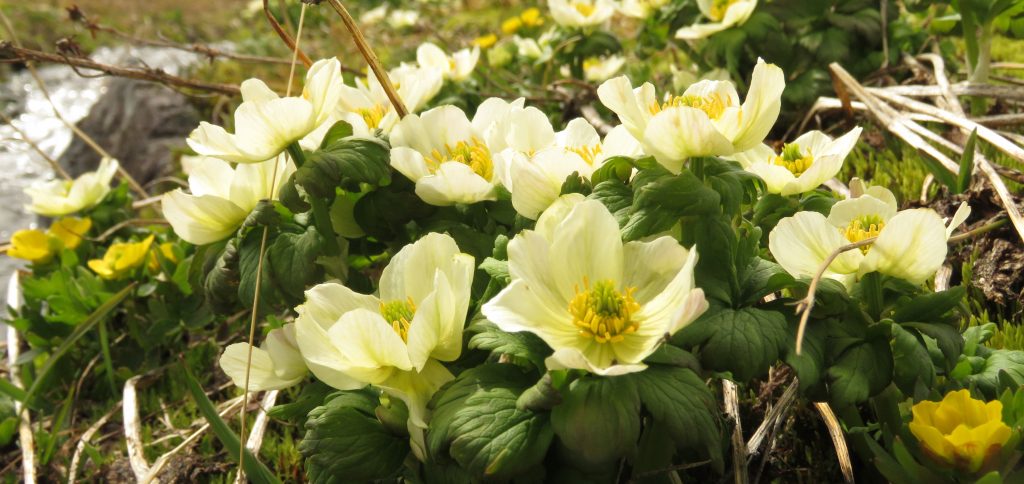
They are often alongside mountain marsh marigolds, and I found these in another branch of the same creek.
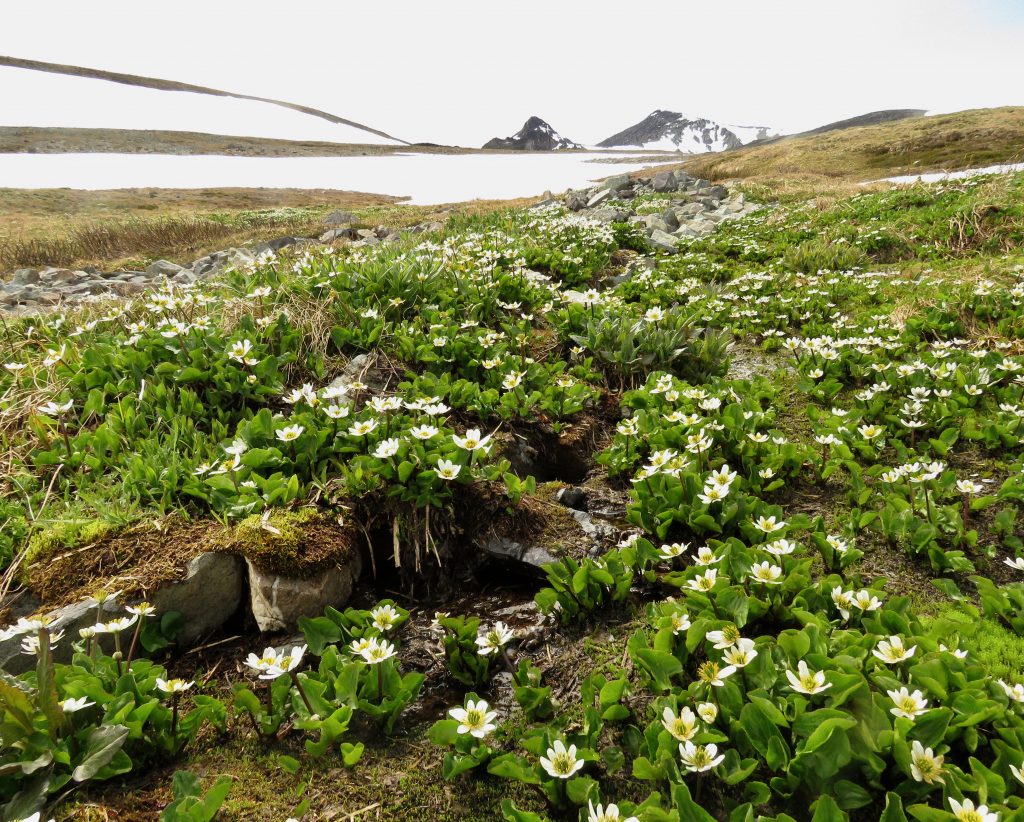
Time to head back across the tundra to my ATV. But there were still a few treasures. Kinnikinnick was blooming profusely, but this plant still carried a few of last year’s berries.
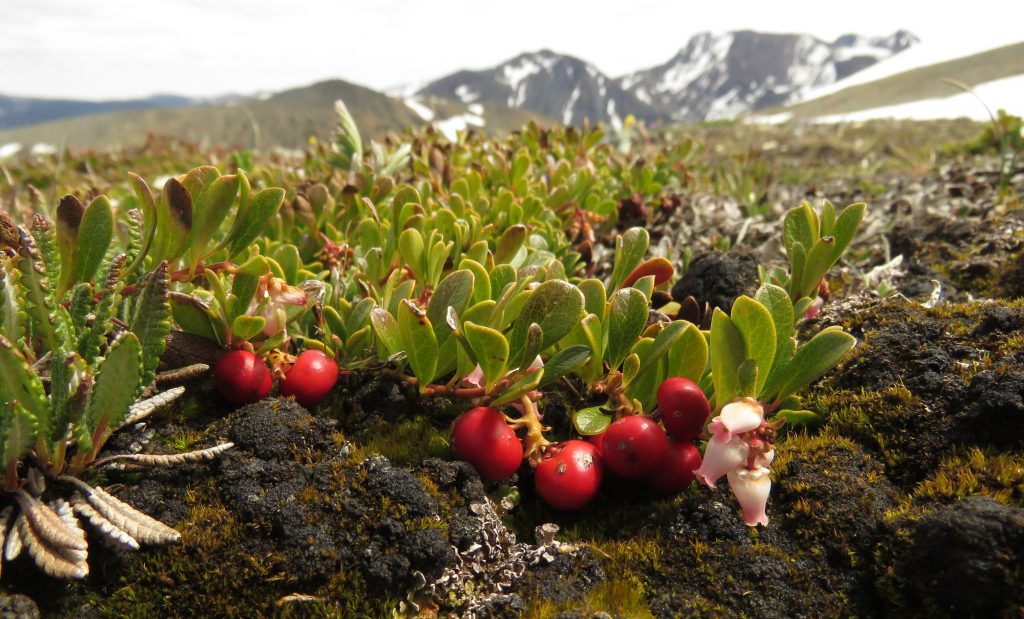
But best of all was a colony of a little-seen plant. I have stumbled upon it several times but it blooms early and the onion-like leaves wither fast so are not visible. It is the alp lily.
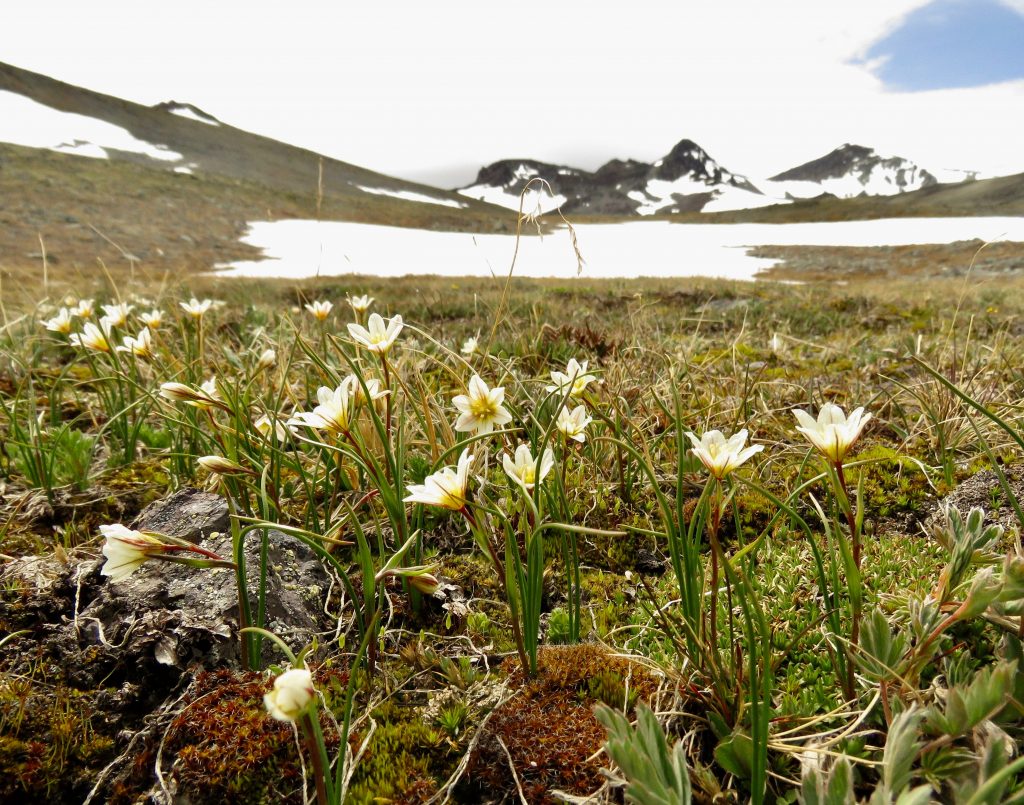
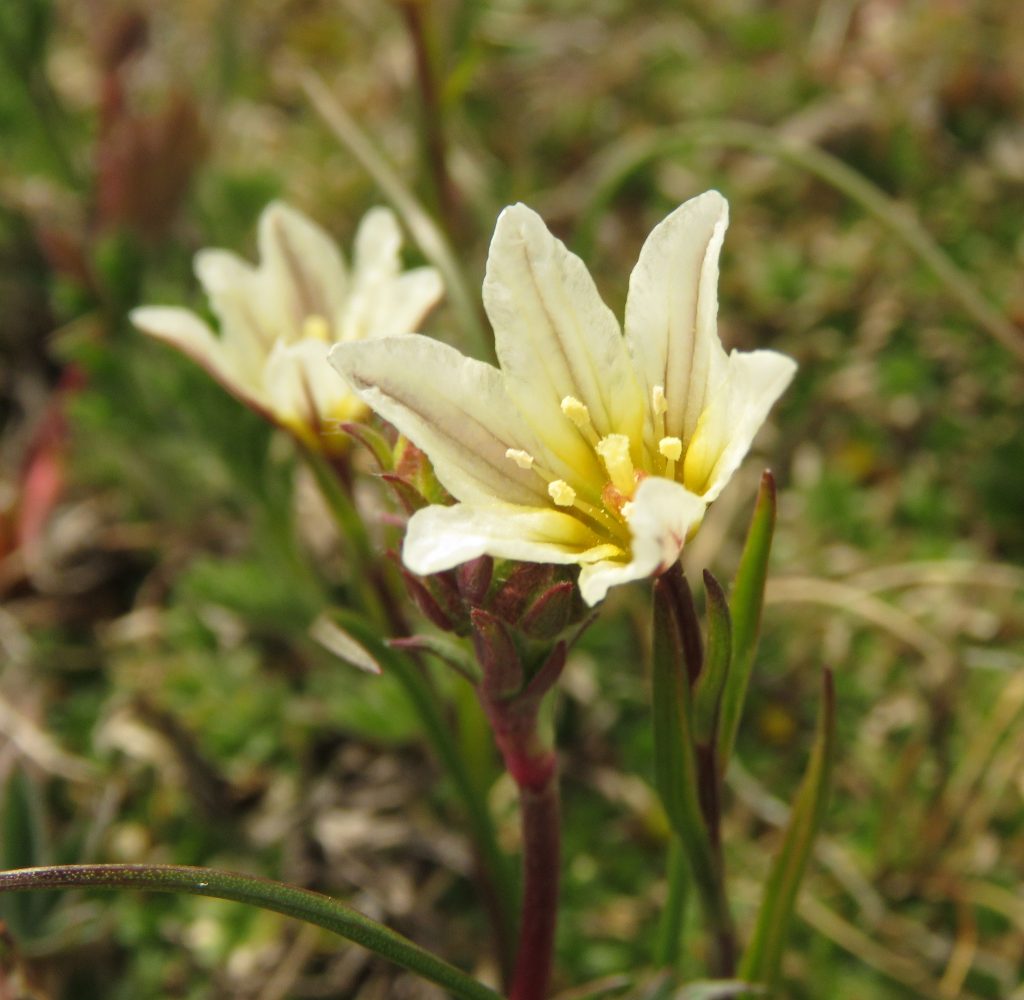
The promised weather deterioration was on its way,
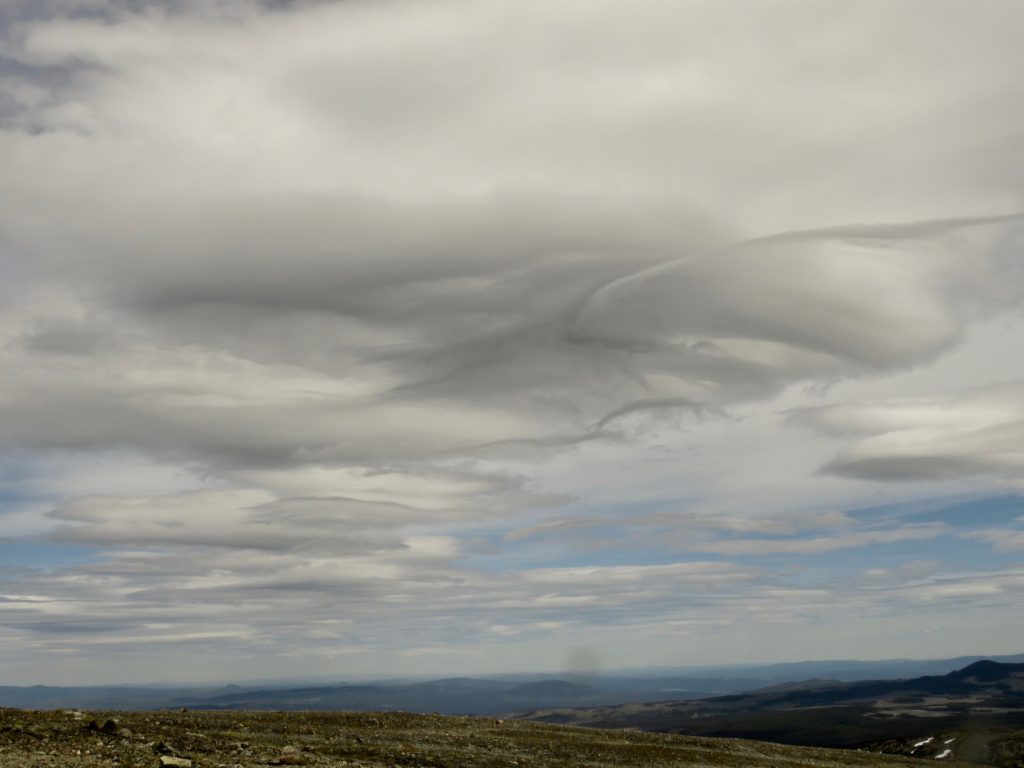
So I got on my stinky, noisy, uncomfortable quad and headed home. (How I sneered at ATV riders a decade ago. Now it is the only way I can get to these places.)
However, I still had another treat in store. On the cutbacks above the road just below the treeline was a particularly dense clump of Penstemon procerus. I stopped to photograph it – and was amazed to see a hummingbird hawk moth feeding on it.
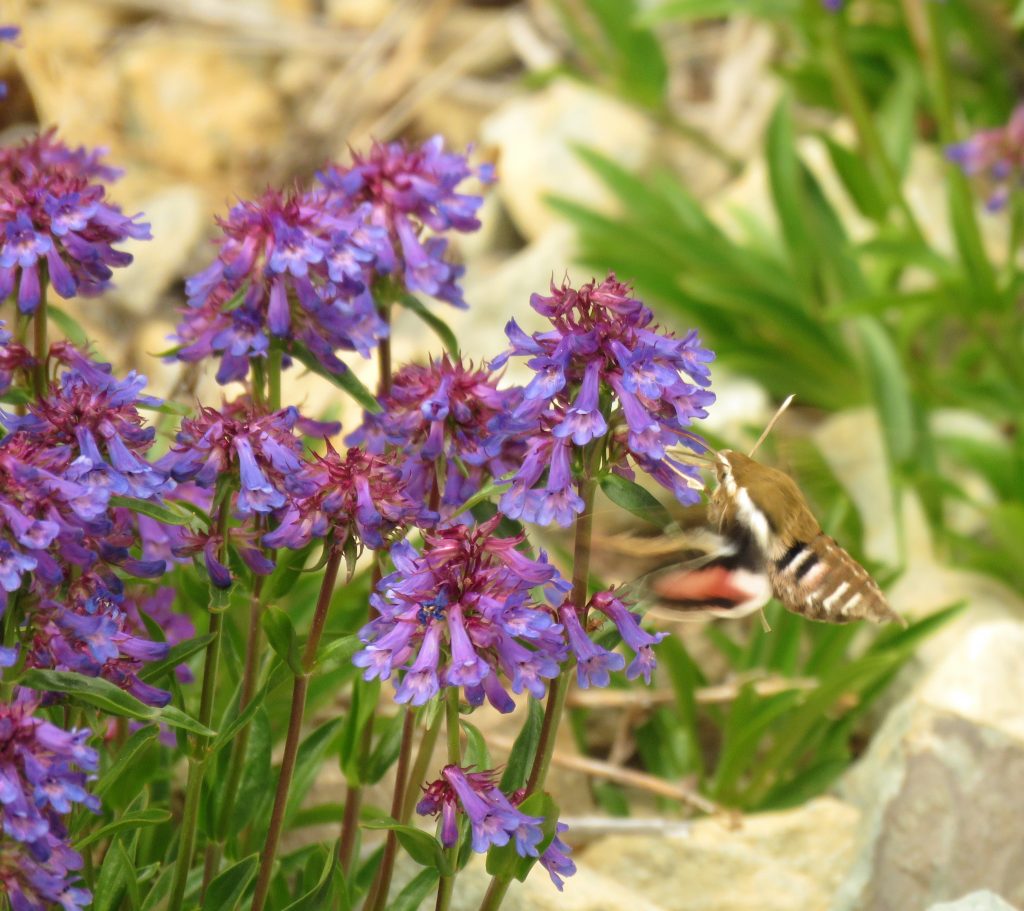
I have seen them only twice before, once feeding on heather in the alpine at Nuk Tessli., and the other time in the Precipice feeding on dandelions. The latter was much smaller and I thought it was a bee, but something didn’t look quite right and of course when I could see it’s head, it was obviously a moth.
They move just like hummingbirds, dipping and bobbing gracefully from blossom to blossom, and it seems to me they are nearly as big. Their whirring wings have a much softer hum. (And they have 4 wings.) There is not a lot of information about them. None of my North American insect books list them. On line, most of the ones portrayed have stripes.

Happy birthday, dear Chris !!!
May the new year in your adventurous life be full of wonderful and beautiful events, scenery, episodes and sheer joy! With all my heart – Alice
I’ve learned to identify many of the sub-alpine/alpine flowers because of your mountain exploring and blog posts. Amazing how these delicate life forms grow in such harsh conditions.